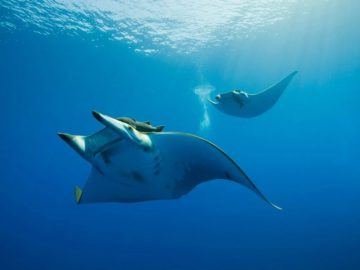Stephanie Pain in Smithsonian:
 There’s only one word for it: indescribable. “It’s one of those awesome experiences you can’t put into words,” says fish ecologist Simon Thorrold. Thorrold is trying to explain how it feels to dive into the ocean and attach a tag to a whale shark — the most stupendous fish in the sea. “Every single time I do it, I get this huge adrenaline rush,” he says. “That’s partly about the science and the mad race to get the tags fixed. But part of it is just being human and amazed by nature and huge animals.”
There’s only one word for it: indescribable. “It’s one of those awesome experiences you can’t put into words,” says fish ecologist Simon Thorrold. Thorrold is trying to explain how it feels to dive into the ocean and attach a tag to a whale shark — the most stupendous fish in the sea. “Every single time I do it, I get this huge adrenaline rush,” he says. “That’s partly about the science and the mad race to get the tags fixed. But part of it is just being human and amazed by nature and huge animals.”
Whale sharks are one of a select group of large marine animals that scientists like Thorrold, of the Woods Hole Oceanographic Institution in Massachusetts, have signed up as ocean-going research assistants. Fitted with electronic tags incorporating a suite of sensors, tracking devices and occasionally tiny cameras, they gather information where human researchers can’t. They have revealed remarkable journeys across entire oceans, and they have shown that diving deep is pretty much ubiquitous among large marine predators of all kinds.
Many regularly plunge hundreds and sometimes thousands of meters — to depths where the water can be dangerously cold and short of oxygen, there’s little or no light except for the flickers and flashes of bioluminescent organisms, and the pressure is immense, putting some animals at risk of fatal decompression sickness.
More here.
